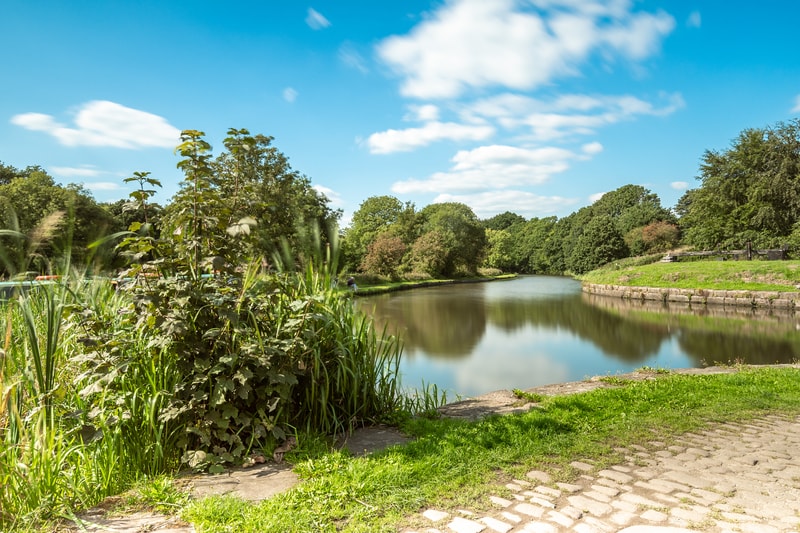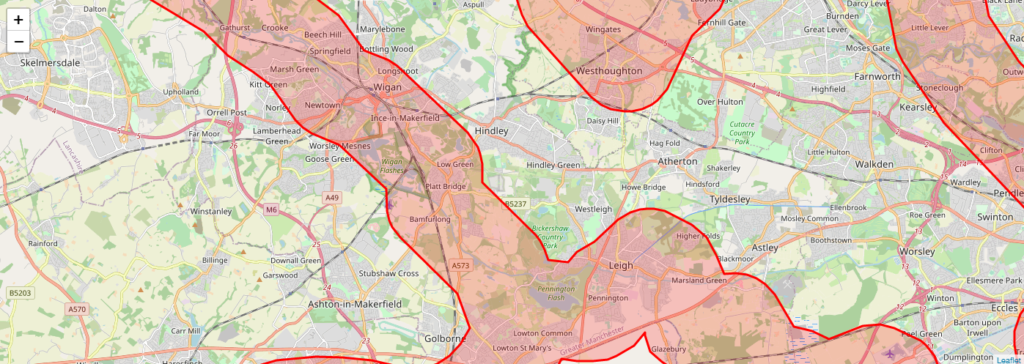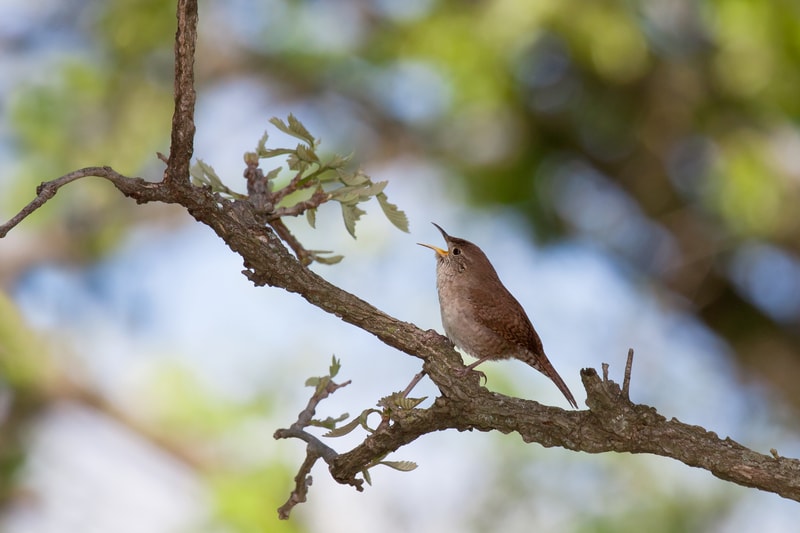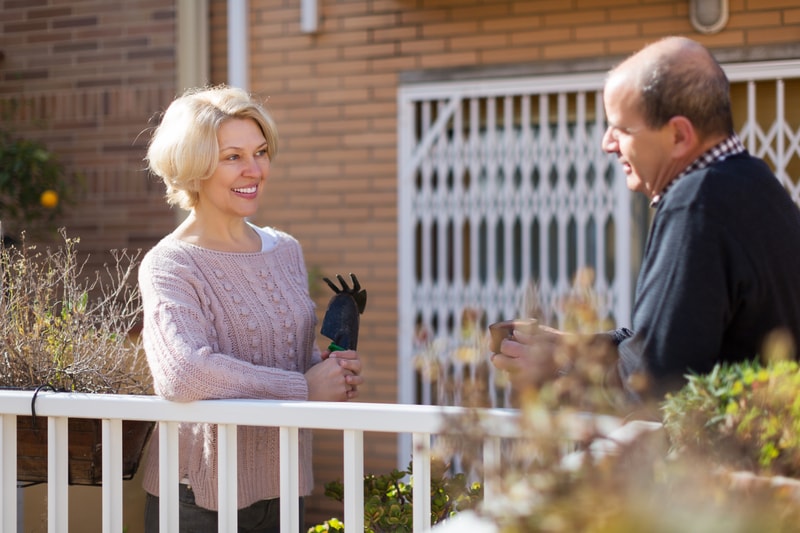You may not know what a wildlife corridor is; it’s a more technical term usually reserved for natural green spaces, not our gardens.
It generally means a space that connects habitats; it’s usually between ecologically important ones.
So for example, a green space next to Wigan Flashes could be considered a wildlife corridor.
Sometimes they’re not considered as necessary as the primary habitat area, but more research shows how vital corridors are; as animals move, they need space to move in. A corridor extends the habitat and essentially makes it a bit larger so more wildlife can thrive and stops the habitats from being so isolated.
However, with more houses and roads being built, the existing habitats are getting more broken up and fragmented, making it difficult for wildlife to thrive. Crossing a busy road or large areas of tarmac is a barrier to many creatures, small and big.
Housing estates actively block corridors; roads, lights, noise, tree loss, fences and walls, and pollution all deter wildlife from moving, eating, and living freely.
But conservation isn’t about just making fantastic reserved natural areas, but increasing the areas close by too – including urban and suburban areas. It’s called green infrastructure.
An example of an increasingly common wildlife corridor is roadside verges. When they’re left to grow can become a corridor for pollinating insects. Being left and unmowed, allowing wildflowers to grow, will increase the existing habitat for them just by a little. It’s worth having.
In Wigan Borough, the council has recently altered the policies to leave some verges entirely and to mow some less, with some beautiful and unexpected rare and beautiful flowers popping up through the grass.

Insect decline
A recent study across the UK shows how insects live and travel around the UK. They are highly dependent on green spaces and wildlife corridors. It has been predicted that 40-70% of species could go extinct if action is not taken to enable species to move through the landscape (Intergovernmental Panel on Climate Change, 2007).
Buglife published a detailed map based on these studies, and created these insects superhighways and there are ‘B lines’ going through Wigan borough. These are areas where insects are known to move through and where we can really target action to help them.
You can see their interactive map here

Nature Recovery Network
Wigan borough is also part of the Nature Recovery plan, which has 5 goals.
1. Improving the quality of current wildlife sites by better habitat management
2. Increasing the size of current wildlife sites
3. Enhancing connections between wildlife sites, either through physical corridors or through ‘stepping stones’
4. Creating new wildlife sites
5. Reduce the pressures on wildlife by improving the wider natural environment
The nature recovery plan, in particular, talks of wildlife corridors, and connecting wild spaces. So hopefully we will see more of this work going on all across the borough in years to come.
This plan is quite early stages, but I’m excited to see how it progresses. And hopefully, we will see any development planning going ahead with more environmental training for those involved, and real concern for wildlife and climate.
Where do gardens come in?
One garden alone generally isn’t a wildlife corridor or a significant habitat. But when you have a street (or many) of gardens all growing and catering for local wildlife, that area becomes more important.
This is particularly true, if you live near a natural space (such as a park, field, canal, woodland etc, or even railway lines), there is a great opportunity to tailor your garden to the wildlife that is already around you and help extend their range.
If you notice a particular bird, could you provide bird feed for it? Or a nesting box? Or put out nesting materials such as hair or organic fibres? Or look at growing plants that insects like that the bird eats?
If you see a butterfly, could you plant something to help the caterpillars of that species?
If you’re not sure what’s around you already, that’s ok. Here are some simple ideas that could help

Creating a garden wildlife corridor
A very simple starting point is to grow more plants or flowers. Try to choose flowers in a variety of shapes and sizes that bloom each season to provide continuous food for pollinators. And adding a bush will provide shelter and food for birds, particularly if it has berries.
You can emulate the road verges movement and mow your lawn less. Plantlife has launched a #NoMowMay campaign, as they found when you mow once a month, the number of pollinators your lawn can support is 10x higher than with frequent cutting.
Considering how much paving you actually need too, it’s expensive and contributes to flooding, so maybe a border instead of some flags would work?
A hedge is another great example. Often in British gardens, we tend to favour fences and brick walls as boundaries and privacy, but they essentially block wildlife from coming and going. Not only removing food and shelter for birds and insects but any stoping creatures on the ground like the now endangered hedgehog from moving between spaces. We’ve written all about hedges recently – the benefits and some practical tips to get started
Your garden could be a fantastic potential spot, but it’s harder for wildlife to make it a good home if there is no exit or entry.
A hedge will create new habitat for birds, help bats migrate, give you privacy, and allow animals to move freely between spaces.
In a smaller way, creating holes for creatures to pass through will help mitigate this isolation—for example, a gap at the bottom of the fence.
Another great example is a wildlife pond—it gives a vital water source to creatures. A whole host of insects will start to find the water fairly soon, including dragonflies, and then in time, the larger animals such as frogs and possibly newts will find their way. In my very small and fairly new pond, I can already see some interesting looking water invertebrates, and birds have been enjoying a good bath.
If you’re friendly with your neighbours, why not have a chat with them about it, and see how you can kind of combine your gardens to create one larger area for wildlife, or renovate the back alley together if you have one.
Adding climbing plants up fences and walls, filling pots if it’s paved. or sowing wildflower seed or planting if it’s not. We’re also offering helping to neighbourhoods who want to work together to sort out the back alleys to make them luscious green community spaces, learn about that here

Imagine a bird’s eye view of all these gardens in a neighbourhood together, with a variety of flowers, less paving, a pond or 2, trees and shrubs, all with small gaps in boundaries and ways to connect and move between gardens.
This new green space really adds up, it sounds wonderful to me, and will help against fragmentation and habitat loss.
Thanks for reading, if you would like more information on community gardening, or want advise, get in touch on either our Facebook page, Instagram, or email

Leave a Reply